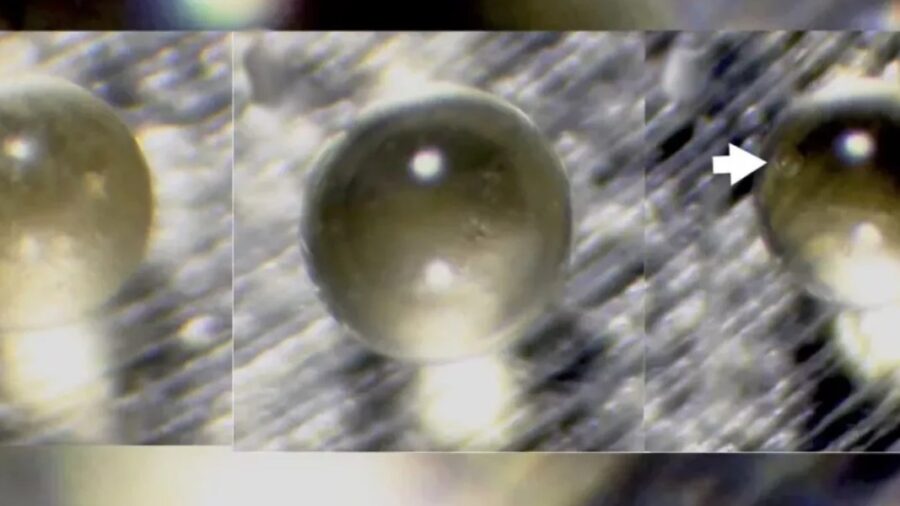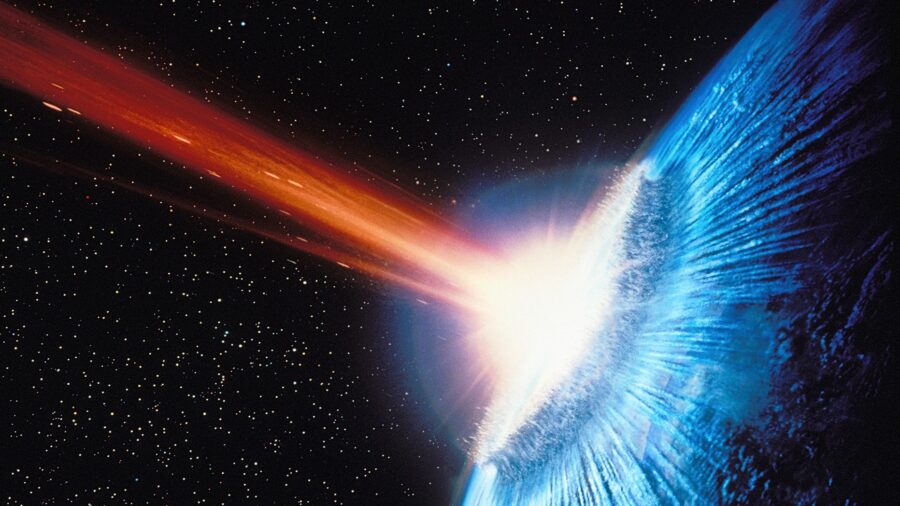Strange Glass Beads Discovered On The Moon Might Contain A Shocking Secret
Scientists have discovered water on the moon, trapped inside glass spheres deep underground.
This article is more than 2 years old

According to Live Science, Chinese researchers may have just found something extraordinary on the moon: water. But you would never know it by looking at it. This moon water is actually trapped inside glass spheres that were buried deep beneath the surface of the moon, and scientists have figured out how to potentially use it for future bases on the moon.
These spheres, called “spherules” by researchers, were collected during the Chinese mission Chang’e-5, named for the Chinese goddess of the moon. These little beads of moon water were scooped up as a part of the soil samples collected during this mission in 2020, and it is believed that they signify the existence of a potential 330 billion tons of water spread across the moon’s surface.
Also known as microtektites or impact glasses, these spherules of moon water form when meteorites crash into the moon at extremely high speeds (we’re talking tens of thousands or hundreds of thousands of miles per hour). Bits of the moon’s crust then spray up into the air in plumes, inside which silicate minerals are heated to “molten temperatures” and join together to create tiny glass beads. Those beads then fall to the ground and are spread all across the surface of the moon.

So, where does the water come in, exactly? Water is composed of hydrogen and oxygen. The moon’s soil, it turns out, contains oxygen, which means that we only need hydrogen to complete the creation of this special moon water. And we get that hydrogen in the form of ionized hydrogen atoms from solar winds, which react with the oxygen to form – you guessed it – our moon water.
The moon water is then sucked into these spheres and they are buried underground with the water inside. Interesting, right? But how do you get that water out, then?
Simple. At very high temperatures, the spheres release the moon water inside and it goes into the moon’s atmosphere. It can then come down on its surface more like the water we are used to. This, researchers say, is awesome news. These spheres can be a great source of water for NASA and China’s National Space Administration (CNSA) when they inevitably build their bases on the moon in the surprisingly near future (according to Live Science, the CNSA sees their base being on the moon and totally functional by 2029).
To get the water out of the moon’s intriguing glass beads in a more conventional way, scientists came up with a very simple process. All you have to do is collect the spherules, boil them in an oven, and then cool them down. Water vapor is released, which then collects in liquid form and is saved in a bottle.
This system of using the moon’s own water shows a lot of promise, because these beads of water are thought to be extremely common under the soil. So, there would theoretically be no risk of running short on them. They are also spread out pretty evenly, so they are easy to find and there would be plenty to go around.
So, it sounds like things are looking pretty good for moon exploration. Talk about one giant leap for mankind!










